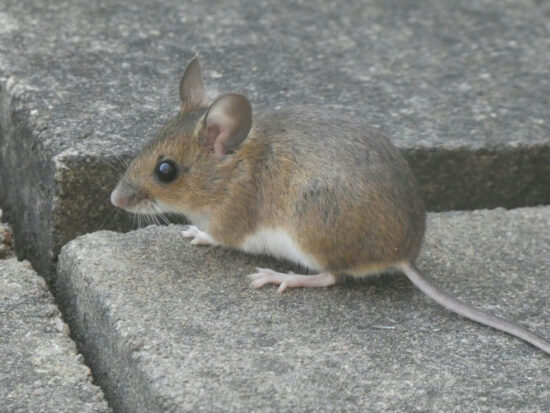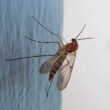When most homeowners spot a single mouse scurrying across the kitchen floor, they often think it’s just one little critter that wandered inside. Unfortunately, that’s almost never the case. Understanding the life cycle and gestation period of a mouse reveals why that one mouse you saw is likely just the tip of the iceberg. The speed at which mice reproduce is truly shocking, and it’s the main reason why quick action is so important when dealing with these pests.
1. The Remarkably Short Mouse Gestation Period
One of the most surprising facts about mice is how incredibly fast they can reproduce. The mouse gestation period is only 19 to 21 days long. That’s right, in less than three weeks, a pregnant female mouse will give birth to a new litter of pups.
But it gets even more alarming. A female mouse can become pregnant again within just 24 hours after giving birth. This means she can have one litter, and before those babies are even weaned, she’s already pregnant with the next batch.
Each litter typically contains 5 to 6 baby mice, though some litters can have as many as 12 to 14 pups. A single female mouse can produce between 5 and 10 litters every year. Do the math, and you’ll realize that one female mouse can give birth to 30 to 60 babies in just 12 months.
The short mouse gestation period is what makes these rodents such effective breeders. While other pests might take months to reproduce, mice can pump out multiple generations in the same timeframe. This is why a small mouse problem can quickly become a massive infestation if left unchecked.
2. From Birth to Breeding in Just Weeks
The mouse life cycle moves at lightning speed from the moment pups are born. Understanding each stage helps explain why mouse populations explode so rapidly.
Newborn Stage (0 to 2 Weeks)
Baby mice, called pups, are born completely helpless. They’re blind, deaf, and hairless. During these first two weeks, they depend entirely on their mother for warmth and nutrition. Around day 4, their ears develop. By day 6, they start growing fur. Their eyes don’t open until around day 13 or 14.
Juvenile Stage (2 to 6 Weeks)
Once their eyes open, young mice become more active and curious. They’re weaned from their mother’s milk around day 21 (three weeks old). At this point, they start eating solid food and exploring beyond the nest. During this juvenile phase, mice grow rapidly, often tripling their birth weight. They learn survival skills and begin to venture out on their own.
Sexual Maturity (6 to 8 Weeks)
Here’s where things get really concerning. Mice reach sexual maturity when they’re only 6 to 8 weeks old. That means a baby mouse born today will be ready to have its own babies in just two months. Female mice can have their first litter as early as five weeks of age in some cases.
Think about what this means for your home. If two mice get inside and start breeding, their babies will be having babies before you even realize there’s a problem. The mouse life cycle creates a snowball effect that’s hard to stop once it gets rolling.
Lifespan Differences
In the wild, mice typically live about 12 months due to predators, harsh weather, and limited food sources. However, mice living indoors can survive for 2 to 3 years. Your warm home protects them from predators and provides steady access to food and water. This extended lifespan means indoor mice have much more time to reproduce, making infestations even worse.
3. The Math Behind Mouse Infestations
When people hear that mice reproduce quickly, they often underestimate just how fast the numbers grow. The reality is truly eye-opening.
Let’s start with just two mice (one male and one female) that find their way into a home. Within three weeks, the female gives birth to her first litter of 6 pups. She can get pregnant again immediately, so three weeks later, she has another 6 pups. Meanwhile, those first 6 babies are growing up fast.
By the time they’re 6 to 8 weeks old, the female pups from the first litter are ready to breed. Now you don’t just have one breeding female anymore. You might have three or four. Each of those females can produce 5 to 10 litters per year.
A family of just 6 mice can multiply into 60 mice in only three months. Under ideal conditions, a single pair of mice can produce over 5,000 offspring in one year when you account for multiple generations breeding. One pest control expert calculated that if every mouse survived in perfect conditions, the number could reach 5 million in a year.
Of course, not every mouse survives, and conditions aren’t always perfect. But the point is clear: mouse populations grow exponentially, not just steadily. This is why professional pest control experts say there’s no such thing as “just one mouse.”
Indoor vs. Outdoor Breeding
Mice living outdoors typically breed during spring, summer, and fall. Winter is too harsh for successful breeding in most climates. But mice that get into your home don’t have to worry about seasons. They breed year-round in the comfortable climate of your house.
This constant breeding cycle, combined with the protection from predators and weather, turns your home into a perfect mouse factory. Natural predators like owls, hawks, and cats help control outdoor mouse populations, but these predators can’t get to the mice hiding in your walls.
4. Warning Signs That Mice Have Moved In
Mice are sneaky creatures that prefer to stay hidden. They’re most active at night when everyone is asleep. But they leave behind plenty of clues that tell you they’re there.
Droppings
Mouse droppings are one of the most obvious signs of an infestation. These small, dark pellets look like grains of rice and are about 1/8 to 1/4 inch long. They’re pointed at one or both ends. Fresh droppings appear dark and shiny, while older ones turn gray and crumbly.
Look for droppings in cabinets, drawers, along baseboards, under sinks, near food sources, and in attics or basements. A single mouse can leave 50 to 75 droppings per day, so finding a lot of them means you have active mice in your home.
Gnaw Marks
Mice have teeth that never stop growing. To keep them from getting too long, mice gnaw constantly on hard materials. Check for small gnaw marks on food packaging, cardboard boxes, wooden furniture, baseboards, and even electrical wiring.
Fresh gnaw marks appear lighter in color and may have wood shavings nearby. These marks are typically about 1/32 inch wide. If you see gnaw marks on your walls or in your pantry, mice are actively living in your home.
Grease Marks and Rub Marks
Mice have oily fur that leaves behind dark, greasy smudges as they travel along their regular routes. These marks appear along walls, baseboards, and in tight spaces where mice squeeze through repeatedly. Look for dirty streaks near entry points, behind appliances, or in corners. If you see these marks, it means mice have established regular pathways through your home.
Strange Sounds at Night
Since mice are nocturnal, you’re most likely to hear them after dark. Listen for scratching, scurrying, or squeaking sounds coming from walls, ceilings, attics, or under floors. These sounds are often the first clue homeowners get that mice have moved in.
Strong Ammonia-Like Smell
Mouse urine has a distinctive, strong smell similar to ammonia. Mice urinate frequently to mark their territory and communicate with other mice. If you notice this musky odor in certain areas of your home, especially in enclosed spaces like closets or cabinets, it’s a strong sign of mouse activity.
Nests
Mice build nests in hidden, dark areas using shredded paper, fabric, insulation, and other soft materials. Common nesting spots include inside walls, attics, basements, behind appliances, and in storage boxes. If you find a nest or see shredded materials, mice are likely breeding in your home.
Seeing Mice During the Day
Mice prefer to stay hidden during daylight hours. If you actually see a mouse running around during the day, it often means the infestation is severe. When populations get too large, mice are forced to come out at less ideal times to compete for food and space.
5. Health Risks Mice Bring Into Your Home
Beyond being creepy and destructive, mice pose serious health risks to you and your family. These aren’t just harmless little creatures looking for shelter. They’re disease carriers that can make people and pets very sick.
Direct Disease Transmission
Mice spread diseases directly through their droppings, urine, saliva, and bites. Some of the most serious diseases include:
Hantavirus is a potentially deadly respiratory disease spread when people breathe in air contaminated with mouse droppings or urine. While rare, this disease can be fatal. There’s no cure or vaccine, and early medical care is critical for survival.
Salmonellosis is a type of food poisoning caused by bacteria found in mouse droppings. When mice run across your countertops or get into your food, they can leave behind bacteria that make you sick. Symptoms include fever, diarrhea, and stomach cramps.
Leptospirosis is a bacterial disease that spreads through contact with water or soil contaminated by mouse urine. It can cause kidney damage, liver failure, meningitis, and even death if left untreated.
Lymphocytic Choriomeningitis (LCM) is a viral disease carried by house mice. About 5% of house mice in the United States carry this virus. Humans can get infected by breathing in dust contaminated with mouse droppings or urine.
Indirect Disease Transmission
Mice don’t just spread disease directly. They also carry parasites that can make people sick. Fleas, ticks, and mites that feed on infected mice can then bite humans and transmit diseases like plague and typhus.
Yes, plague still exists in the United States, particularly in western states. While it’s rare, several human cases are reported each year. Mice and rats carry fleas that spread plague bacteria. Without quick treatment, plague can cause serious illness or death.
Food Contamination
Mice contaminate far more food than they actually eat. They leave droppings and urine wherever they go, including in your pantry, on your counters, and inside food packages. A mouse only needs about 1/10 of its body weight in food per day, but it ruins much more through contamination.
Asthma and Allergies
Mouse urine and dander can trigger asthma attacks and allergic reactions, especially in children. Studies have linked mouse allergens in homes to increased asthma symptoms and emergency room visits.
Property Damage and Fire Hazards
Mice cause extensive property damage through their constant gnawing. They chew through insulation, drywall, wood, and furniture. But the most dangerous damage is to electrical wiring. When mice gnaw on wires, they create fire hazards. Rodents are responsible for up to 25% of house fires in the United States each year.
6. Why Professional Mouse Control Cannot Wait
Given everything about the mouse life cycle and mouse gestation period, the message is clear: time is not on your side when dealing with mice. The longer you wait, the worse the problem becomes.
The Window of Opportunity Closes Fast
Remember, the mouse gestation period is only three weeks, and mice reach sexual maturity in about two months. Every day you delay gives the mouse population time to double, triple, or grow even larger. What starts as two mice can become dozens in just a few months.
Many homeowners think they can handle a mouse problem with a few traps from the hardware store. While this might work if you catch the problem extremely early, DIY methods usually fail once an infestation is established. By the time you realize the traps aren’t working, the population has already grown significantly.
Professional Expertise Makes the Difference
Professional pest control technicians understand the mouse life cycle and know exactly where to look for signs of activity. They can identify entry points you might never notice, like tiny cracks in your foundation or gaps around utility lines. Remember, mice can squeeze through openings as small as 1/4 inch (about the size of a dime).
Professionals also know mouse behavior patterns. They understand that mice travel along walls, where they nest, and how they move through a building. This knowledge helps them place traps and bait stations in the most effective locations.
A Comprehensive Approach
Effective mouse control requires more than just setting traps. It needs a three-part strategy:
Exclusion means sealing up entry points so new mice can’t get in. This includes repairing holes in walls, sealing gaps around pipes and vents, installing door sweeps, and fixing damaged screens.
Population Reduction involves eliminating the mice already living in your home through strategic trapping and baiting. Professionals know how many traps to use, where to place them, and how to check them safely.
Prevention focuses on making your home less attractive to mice. This includes proper food storage, eliminating water sources, reducing clutter, and ongoing monitoring to catch any new problems early.
Proper Cleanup and Sanitation
Cleaning up after a mouse infestation isn’t as simple as sweeping up droppings. Mouse waste can contain dangerous viruses and bacteria. Professional pest control services know how to safely clean and sanitize affected areas without putting your family at risk.
Improper cleanup, like dry sweeping or vacuuming mouse droppings, can put virus particles into the air where you breathe them. Professionals use proper protective equipment and follow CDC guidelines for safe rodent cleanup.
Cost Comparison
Many people hesitate to call professional pest control because they’re worried about the cost. But consider this: early intervention with professional help costs far less than dealing with a severe infestation later.
A small mouse problem might need just a few service visits. But if you wait until mice have spread throughout your home, the cost goes up significantly. You might need extensive exclusion work, multiple rounds of treatment, insulation replacement, and repairs to damaged wiring or structures.
Plus, there’s the cost of the damage mice cause while you’re trying DIY solutions. Chewed wiring can cause electrical problems or fires. Contaminated food must be thrown away. Damaged insulation loses its effectiveness. Health problems from mouse-borne diseases can lead to medical bills.
Long-Term Protection
Professional pest control doesn’t just solve your current problem. It sets up your home for long-term protection against future infestations. Many pest control companies provide ongoing monitoring and maintenance to make sure mice don’t come back.
This peace of mind is worth a lot. You won’t have to worry every time you hear a sound in the walls or wonder if that’s a mouse dropping in the corner. You’ll know your home is protected by experts who understand how to keep mice out for good.
Understanding the mouse life cycle and the rapid mouse gestation period makes one thing perfectly clear: mice are not a pest you can afford to ignore. Their incredible reproduction rate means a small problem becomes a big problem in just weeks. The health risks they bring into your home are serious and real.
If you’ve seen signs of mice in your home, don’t wait. Every day counts when dealing with these fast-breeding pests. Professional pest control services have the knowledge, tools, and experience to eliminate your mouse problem quickly and keep it from coming back. When it comes to mice, fast action is the only smart action.


